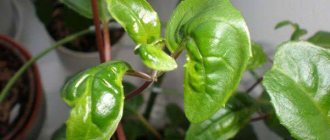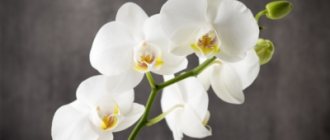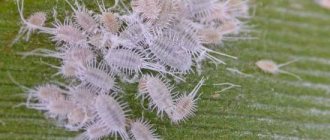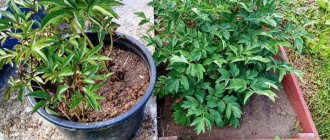Causes of the problem
There is no single correct answer to how to make hippeastrum or fuchsia bloom. The source of the problem is always identified first, and then all efforts are directed towards it. This is the only way to effectively and quickly solve the problem. As for the lack of flowers in fuchsia, the reasons can be divided into 2 categories. The first will include those that are being carried out “here and now” (their correction can lead to flowering this year), and the second will include those that once were (correction will take a long time, so the flowers will bloom in at least year). So, fuchsia does not bloom - the reasons for the problem.
Known short term bugs:
Bad light. Lack of light will lead to pale shoots, which will begin to stretch in length. A weakened plant is unlikely to be a good basis for blooming flowers.
Heatwave. When the question arises why crocuses or fuchsias do not bloom, you should think about the temperature around the plant.
Lack of fertilizers. The absence of phosphorus-potassium fertilizers or their deficiency leads to poor flowering, the formation of small flowers, and even the refusal of fuchsia to produce buds. But an excess of feeding is also harmful: the plant ages prematurely, the flowering period is significantly reduced, and the petals fade and lose their brightness of color.
Problems with the amount of watering. Excess moisture, just like lack, leads to problems with the plant as a whole. Under improper watering conditions, fuchsia will definitely not bloom.
Presence of pests or disease. We cannot discount the fact that in conditions of survival there is practically no energy left for beauty.
Mistakes made in the long term:
1. Unsuitable wintering conditions.
An increase in ambient temperature above +10 degrees can lead to continued growth. As a result, weakened long shoots will simply not be able to produce flowers by spring.
2. Errors in pinching and late pruning.
It is very important in the fall and spring to cut out all broken, weakened and, of course, diseased branches. After pruning, the growth of lateral dormant buds begins
It is important to start pinching the plant after 2-3 pairs of leaves (depending on the shape you want to give the fuchsia).
Here’s a very interesting point: pinching helps to take control of flowering. The last pinching of fuchsia, according to the rules, will lead to flowering of non-double varieties after 60 days, double varieties - after 80, semi-double varieties - after 70. If Triphylla and several other similar types of shrubs are placed on the windowsill, then flowering should be expected in exactly 3 months.
3. Choosing a container that is too large for a particular plant.
First, the fuchsia must entwine its roots around the entire lump of substrate inside the flowerpot, and only then it switches to the flowering process. In addition, in a large pot, the roots are often damaged and suffer from excess moisture.
4. Overfeeding with nitrogen fertilizers.
On the one hand, excess feeding leads to rapid growth, and on the other hand, it has a depressing effect on the plant. Excessive green mass of foliage drowns out the need for shoots to produce buds.
5. Poor substrate.
Light soil leads to depletion and overdrying of the earthen clod, which is why the roots of the plant begin to stick to the inner walls of the container. This is how the problem of starvation and lack of water arises. A heavy substrate inhibits the development of thin roots, which promptly deliver nutrients and water from the soil to the center of the stem. Fuchsia in such soil stops receiving water, moisture stagnation occurs and the main roots begin to rot.
6. Problem with the root system.
In addition to the above-mentioned soil deficiencies, overheating, hypothermia, and also ignoring the rules for watering fuchsias lead to weakening of the roots.
7. Special variety.
To set buds, late-flowering shrub species must grow a long shoot of 5-6 internodes (or even more). Perhaps the fuchsia simply has not yet had time to grow to the point when it is time to start flowering. Or, what is also likely, late pruning negated the bud set this year.
Getting buds to appear
How to make fuchsia bloom? First, you should carefully study the list of reasons that lead to the absence of buds on the shoots of this shrub. Next, you need to eliminate the source of the problem. Of course, there is no way to correct severe pruning, but in six months this information will be taken into account.
To achieve flowering, the main emphasis is usually on comprehensive care measures:
Temperature. In summer it is better to maintain a range of 18-25 degrees. Above 30 degrees will cause the leaves to drop and the flowering process to stop.
Lighting
It is important to provide diffused light (the eastern part of the house or comfortable partial shade in the garden will do). If the plant begins to produce flowers, it must not only be rearranged, but even rotated (the buds and flowers will fall off immediately)
Watering. From spring to autumn, it is recommended to water the substrate abundantly with soft, settled water. It is assumed that the soil has good drainage and there will be no stagnation of moisture at the bottom of the pot.
Air humidity. In spring and summer, it is advisable to spray the plant and the air near it twice a day. Additionally, place a container with water and pebbles at the bottom. In autumn and winter, air humidification is abruptly stopped.
Feeding. In open ground, biofertilizers are suitable, but indoors it is better to use fertilizers for home flowers. From April to mid-autumn, additives are allowed once a week, but in winter they stop adding any fertilizers altogether.
Pruning. It is ideal to shorten the branches by one third in the fall before wintering. It is advisable to dry the cut areas in a warm room, and then transfer them to a cool environment with a temperature of +5-+10 degrees. In spring, pruning is carried out around the beginning of March, when the results of the postponed winter are visible.
Fuchsia is a beautiful flower
It is important to provide proper care, and the plant will delight you with vigorous flowering
General rules for caring for lilies
Lilies are perennial plants. They reproduce by scales and bulbs; the second method is more common. The flowers are characteristically bell-shaped or funnel-shaped; in some lilies they are more twisted, in others less. Depending on the variety, the inflorescences may have different colors: yellow, white, pink, crimson, etc.
Lilies are wayward and sometimes capricious plants.
Before you begin to answer the question of why lily buds fall off, you should familiarize yourself with the basic rules for caring for the plant. Quite often the reason for wilting lies precisely in this, so minor adjustments in agricultural technology and the plant will again begin to delight with lush flowering.
Lilies are wayward and sometimes capricious plants. However, if you study the basic rules of care, even a novice agronomist will be able to grow them.
So, what is required for success:
- choose the right site;
- using only high-quality planting material;
- follow all planting and care rules;
- prevent and treat diseases.
Attention! In the wild, lily varieties are found in Europe and Asia. Approximately six species can be found in various parts of North America
Thanks to wild species, the development of new hybrids and varieties began. In total, today there are more than 30 varieties.
Planting lilies
Planting a perennial crop is carried out according to the following algorithm:
Preparation of planting holes. It is recommended to prepare the area in advance. First, you need to dig up the soil using the bayonet of a shovel. During digging, mineral and organic fertilizers are introduced into the soil; potassium and phosphorus must be present in the composition. If the gardener plans to plant varieties that do not tolerate acidic soils, then add ash, chalk or lime to the hole before planting. It is recommended to moisten the soil before planting. The most common planting method is with bulbs. If upon visual inspection the planting material seems dried out, then before planting it is recommended to immerse it in Epin’s solution for several hours
After all the preparatory manipulations, the bulb is immersed in the hole, covered with soil and carefully compacted.
The optimal time for planting is the second half of August - the first half of September. But in general, bulbs can be planted in the spring, as soon as the soil warms up. After autumn planting, it is recommended to mulch the bulbs with a layer of peat or manure; the layer should be at least 10 cm.
Planting lilies in the ground
Care
If you properly care for your lily throughout the growing season, you will not encounter any difficulties with it. The landing site, soil composition and quality of planting material are of great importance, but that’s not all. Proper care plays an equally important role in ensuring lush flowering. Typically it comes down to:
- watering;
- application of organic and mineral fertilizers;
- prevention of diseases and pests;
- mulching;
- loosening the soil.
Experienced flower lovers apply fertilizer twice during one growing season. The first feeding is carried out in the spring before budding. During this period, it is advisable to use a complex of mineral fertilizers. The soil is fertilized a second time at the end of flowering - the plant needs potassium-phosphorus compounds.
Feeding Lily
When it is sultry outside, lilies need to be provided with regular and abundant watering. The bush should be watered directly at the root. After irrigating the land, the circle around the trunk is mulched. Lilies, like most other bulbous plants, have good resistance to various diseases. But Fitosporin is used for preventive purposes (according to the instructions).
Fuchsia: growing and care at home
In the process of caring for a fuchsia flower, it is important to maintain certain temperature and humidity conditions, use suitable soil, water and spray the plant on time. During the flowering period, the pot must not be rotated or moved to another location.
Light and temperature
The flower feels good on windowsills where there is diffused light, but sunlight is acceptable in the morning and evening hours. If the window faces south, the leaves are protected from burns by a translucent matte film glued to the glass. On the north side, the plant will bloom poorly, and the branches will begin to stretch upward.
Requirements for soil composition
The bush is planted in universal soil. You should not plant the cuttings immediately in a large container. Its size is increased gradually. At the bottom of the pot, arrange a drainage layer of expanded clay or other suitable material. Since fuchsia loves loose, porous soil, the soil is not compacted with hands. It is enough to shake and tap on the walls of the pot so that there are no voids when laying the soil.
Watering and spraying
For irrigation, use only soft, settled water at room temperature. The intensity of watering depends on the season. In the off-season and summer, the flower is watered as soon as the top layer of soil dries out, but in winter, watering is reduced to once a week, reducing the amount of liquid introduced at a time. In order to prepare fuchsia for winter, it is watered a couple of times a month from mid-autumn until the beginning of winter.
Fertilizer at home
Proper care for fuchsia at home cannot be provided without feeding. Ready-made mixtures for flowering plants are used as fertilizer. If desired, purchase special compositions for fuchsias.
When introducing them, adhere to the following recommendations:
- The first couple of months after transplantation, the flower is not fed. He must get used to the new soil, and the abundance of minerals will only hinder the process.
- It is better to fertilize during the period of bud formation and active growth. Fertilizers are applied once a week.
- When the first flower stalks appear, the amount of fertilizing is reduced by half so that they do not fall off.
- Be sure to observe the frequency of the procedure. The soil is fertilized only in spring and summer, and in the winter and autumn seasons this is not done so that the flower prepares for wintering and does not begin to actively grow.
- Spring feeding begins with a small dosage. The volume of fertilizer applied is gradually increased, then switched to weekly feeding.
Fuchsia does not bloom: reasons
Why fuchsia doesn’t bloom interests not only novice gardeners. This plant is very whimsical and can disappoint even an experienced gardener. There are many factors influencing the growth and flowering of a plant. Here are the main ones:
- illumination;
- air temperature;
- lack or excess of moisture;
- pests and diseases;
- soil composition.
If at least one of the parameters is not met, this leads to a decrease or complete absence of buds. Therefore, as quickly as possible, it is worth finding out why fuchsia does not bloom at home and what to do to correct the situation. There are reasons that can be eliminated immediately and allow buds to appear this year or prepare the bush for flowering next year.
Lack of light
Fuchsia is a light-loving plant; lack of lighting affects the appearance of buds. It is better to place the flower on the eastern, western and southwestern windows (sides of the site). It benefits from fresh air, so it is recommended to send the fuchsia pot to the garden in a pot for the summer, as it is, or replant it on the plot. But you will need to protect the flower from the wind, and on hot sunny days, shade it from direct sunlight.
Fuchsia does not bloom what to do
Important! When the buds appear, under no circumstances should you move or rotate the plant.
Air temperature
For fuchsia, air temperature is of great importance. In summer, on hot days (over 30°C), to prevent the buds from falling off, spray the flower itself and the air around it twice a day. For additional moisture in hot weather, place a small container with expanded clay and water. And the main condition for winter maintenance is the air temperature not higher than 15°C.
Lack of moisture
If there is a lack of moisture, the soil dries out, the foliage falls off, and budding may not occur at all. Good watering with settled water is recommended; there should be drainage at the bottom of the pot so that water does not linger, leading to rotting of the roots.
Pests and diseases
Fuchsia, like all plants, suffers from some diseases. She loves moisture, but its excess can cause gray rot. Brown spots appear on the stems and shoots are affected. The treatment is carried out with copper-containing preparations, such as foundationazole, pureflower.
Important! If root rot has affected the fuchsia root, it can no longer be saved; all that remains is to cut off the shoots and place them in a glass of water for rooting. In order not to provoke the disease, use a coarse-grained substrate, water it rarely but abundantly
Glyocladin is used for prevention
In order not to provoke the disease, use a coarse-grained substrate and water it rarely but abundantly. Glyocladin is used for prevention.
Whitefly
Their insects are loved by fuchsia spider mites, whiteflies, and aphids, so the plant must be inspected for the presence of these pests and treated with insecticides. For example, spider mites can be eliminated with karbofos.
Sometimes yellow spots appear on the underside of the leaf. This disease is called rust, which causes leaves and flowers to fall off. Treatment against it is carried out with the drugs Vertan, Bordeaux mixture, which are diluted strictly according to the instructions indicated on the package.
If the plant is affected by pests, but is still able to bloom normally, you still need to take all measures for treatment.
Fuchsia - home care
Content temperature
In the warm season, the optimal temperature for fuchsia will be within +20-25 degrees. In principle, higher temperatures are allowed, but not too much. When the temperature rises to +30 degrees, fuchsia can shed its leaves. This should be especially taken into account if you plant it in open ground for the summer, which is not only allowed, but also has a beneficial effect on it. But in this case it must be planted in a place where heating to a critical temperature is excluded. In the summer, many gardeners treat fuchsia as if it were a plant, that is, they dig it into the ground along with the pot. This will allow you to quickly change its location without damaging the plant.
In winter, this indoor plant must be given a rest. Accordingly, the temperature during this period should be significantly reduced (about +8-12 degrees). But severe hypothermia is just as dangerous as overheating. This especially applies to the root system. To maintain optimal winter temperatures, fuchsia is placed on the windowsill at this time, where the required temperature is most likely. In order to avoid hypothermia of the roots from a cold window sill or, on the contrary, overheating from a window sill heated by a radiator, the flower pot must be isolated from it. This is easy to do - place the pot on a suitable piece of foam.
Lighting
Indoor fuchsia is a light-loving flower, but the light for it should be, although bright, diffused, without midday sunlight, which poses a danger to most indoor plants. At home, the best place for the vast majority of indoor flowers, and fuchsia in particular, is in windows oriented to the east or west. Even if a certain amount of sunlight hits the flower in the morning or evening hours, it will only benefit it. The same rule should be used if you plant fuchsia in open ground.
Watering, air humidity and fertilizers
Fuchsia, which is essentially very simple to care for at home, still requires proper watering. During the period of active development, which occurs in the spring-summer period, it must be watered regularly and abundantly. But regularity does not mean continuous watering and waterlogging of the soil. Here it is necessary to follow the rule of the “golden mean”. The smartest thing to do is to water the fuchsia as soon as the top layer of soil in the pot dries.
. This way, you will protect it from drying out and overflowing.
In winter, watering is significantly reduced. Some seasoned gardeners recommend not watering it at all in October-November, but I would not recommend novice gardeners to do this. Let the soil dry (not completely), and then water it. In general, it is recommended to water fuchsia once or twice a month if it is kept cool. It would be enough. For watering at any time of the year, use settled water, preferably soft and, of course, not cold.
In summer, try to spray the flower regularly. Fuchsia loves it. Others can also be used. During the dormant period, the flower should not be sprayed.
Fuchsia is fed
only during the growing season. Starting from March and until the onset of autumn, it can be fed with any complex fertilizer for flowering indoor plants weekly (fertilizers for). From the end of summer, fertilizing should be gradually reduced, and with the onset of the dormant period, it should be stopped altogether.
Transfer
At home, replanting fuchsia is a mandatory and annual event, regardless of the age of the plant. It is carried out in the spring, before the start of the growing season. During the same period, other manipulations with the plant are carried out that accompany the transplantation. Be sure to prune the plant before planting. Remove dried, weak or, on the contrary, elongated (fatten) shoots completely. Cut the rest by a third. After removing the plant from the pot, be sure to inspect the roots. Remove damaged areas, if any.
It is best to plant fuchsia in a ceramic pot. It will better protect the root system from overheating and hypothermia than plastic. With each transplant, take a pot slightly larger than the previous one, about 1-2 centimeters in diameter.
Unpretentious fuchsia does not make any special demands on the composition of the soil. There are many soil mixtures on sale that are suitable for replanting. This is usually light, loose soil. If you want to make your own soil for fuchsia, you can mix the following ingredients:
- Leaf soil - three parts;
- Peat - two parts;
- Sand (or perlite) - one part
It is highly advisable to add wood ash to the mixture. It can also be added to the purchased mixture if it is not contained in it.
Be sure to provide.
Fuchsia has dropped all its leaves and is drying out, although I water it well, tell me how to save it?
In winter it has a dormant period, so abundant and frequent watering is strictly prohibited. Keep in a cool, bright place with moderate watering.
Fuchsia does not like being moved in relation to the light and does not like drafts, and if the leaves are limp and the soil is watered, then the root system may be rotten
It’s most likely either a spider mite or some other small frozen creature. I can’t say for sure how to help, but you definitely can’t save it with water. I had fuchsia, in general they are picky. so ask some special store for the product. I feel sorry for the flower, he looks very unhappy. (I wish I could save it in time)
this is normal. phenomenon for winter. Dormant stage: abundant watering from spring to autumn, moderate in winter. The leaves will grow back in the spring. Pace. moderate, bright light, but not direct sun. rays. During the period of leaf growth, you need to spray them.
Fuchsia sheds its leaves
Analyze - if you have flooded it, then it is worth removing the soil and checking the roots. Cut off rotten ones and sprinkle with crushed coal (for disinfection).
flooded. Just throw it away. She has nothing to do at home anymore. But you can leave the stump 15 cm high. In the spring, the branches may grow
“although I water it well,” - this is strictly forbidden to do in winter. It needs cool keeping in winter with minimal watering. I spray mine every day in winter so that spider mites don’t get infested.
indoor-plants-tips.ru
Failure to meet the basic needs of the Chinese rose
Any indoor plant, hibiscus is no exception to the rule, requires special care.
The following are always important to him:
- air temperature and humidity in the room;
- lighting;
- regularity and intensity of watering;
- preparation for the winter period;
- soil quality.
Temperature and humidity levels
The air temperature in the room where hibiscus is grown should not exceed +23°C in summer and +18°C in winter. In the development of Chinese rose buds, the following pattern is observed: at low temperatures, the buds do not ripen, and at too high temperatures, they wither and fall off.
Lighting and watering
Hibiscus loves light very much. It needs sunlight for at least five hours a day. To provide the flower with optimal light conditions, you need to grow it on southern windowsills. In partial shade, a flower may produce few buds, which may fall off without blooming, or may not bloom at all. Therefore, if the hibiscus buds are weak and wither, you should move the plant to more illuminated areas of the room without drafts.
Most of all, the Chinese rose requires moisture during the active growth phase - from March to October. You need to water the flower once a day with settled water at room temperature, and you should not leave water in the tray of the pot.
In winter, watering the plant should be halved. The resting phase can be determined by the rose's shedding of foliage.
Wintering
Before the resting phase, hibiscus should be pruned. Strong and large inflorescences are formed only on fully formed shoots. The Chinese rose is given the shape of a tree. Weak shoots must be pruned. After pruning, the hibiscus is provided with optimal lighting and a cool temperature of at least +15°C. Favorable wintering conditions enable the plant to prepare for abundant flowering without the buds falling off.
Growing fuchsia from seeds
Consider growing fuchsia from seeds at home. Fuchsia can be propagated by seeds, although this is extremely rarely practiced in indoor culture. This method is very labor-intensive, it is much more complicated than vegetative propagation of the plant. However, some gardeners still grow varietal specimens from seeds.
Fuchsia seeds can be purchased at specialty stores or garden centers.
However, it is advisable to take them from trusted suppliers. You can often buy expired seeds, the germination rate of which drops significantly over time.
You can also get fuchsia seeds at home. To do this you need to have 2 flowering plants. The flower is pollinated artificially, after which a fruit grows from it. Fully ripened fruits are removed and cut to allow the seeds to dry. Then they are removed and stored for no more than 1 year.
The best time to sow seeds is the end of March or the beginning of April. Sow them in small containers filled with moist peat soil. To prepare such soil, you need to mix peat and coarse sand in equal parts. Seeds should not be covered with substrate. They need to be placed on top and lightly pressed into it.
The container with seeds is covered with transparent film or glass.
and kept at a temperature of 15-20ºС. Every day the film should be removed for 10-15 minutes for ventilation. The first shoots in such conditions appear after 2 weeks.
When the first leaf appears on the seedlings, the film is removed daily for a longer time, accustoming them to new living conditions. After 1-2 weeks they open completely. Seedlings are kept in bright but diffused light and periodically sprayed with water at room temperature.
When the seedlings have 3 leaves, they can be planted in separate pots. They are replanted with a clod of earth, adding soil for growing adult fuchsias into the pot. After transplantation, they are placed in partial shade for adaptation for 1 week.
Photo of fuchsia in the process of care at home and in the garden:
What kind of soil does fuchsia like?
The quality of development of any plant depends on the soil. It provides nutrition, moisture, and promotes proper aeration of the roots.
Fuchsia prefers light, fertile soil. Good drainage is required. Neutral acidity is desirable, but slightly acidic is also suitable.
As a base, you can use purchased soil, for example, universal. For this crop it will have to be diluted with sand. But it is best to prepare the soil mixture yourself.
What soil is needed for fuchsia
There are several options for mixing it yourself.
For the first, you can mix an equal amount of peat, rotted leaves, compost and add double the volume of sand.
A good composition would be loamy soil, peat and sand. Recommended proportions are 7:3:2.
If you have loamy or sandy loam turf, you can create a mixture based on them. How the supplement goes:
- granulated peat (or leaf humus);
- wood ash.
If the turf is from pastures, that is, very nutritious, you can mix it with a small amount of peat and sand (6:2:1). With a slight correction, it can also be used for planting cuttings (4:2:1).
Important! It is not recommended to use fine sand from the quarry. Only river water will do - large, washed
In recent years, coconut soil has become fashionable. It is made from the hairy skin of nuts. The material is extremely moisture-intensive, rich in microelements, and decomposes for a very long time.
For fuchsia, adding it to the soil is simply a salvation. It is almost impossible to pour the coconut mixture, which means the plant’s roots are safe.
Sometimes sphagnum moss is used to increase the breathability of the soil.
Also add a small amount to the mixture:
- complex fertilizers (for flowering plants);
- vermiculite;
- pine needles;
- hydrogel.
Note! When planting, be sure to add a high layer of drainage. You can use broken bricks, pebbles, etc.
The finished mixture must be sterilized before planting. Disinfection can be achieved by calcination and deep freezing. True, then you will have to populate the soil with beneficial bacteria. Biological products (for example, phytodoctor) will help with this.
Tips and recommendations from experienced flower growers and summer residents
Before you start growing roses, you need to decide on the type and variety. The right seedling is of great importance.
When choosing seedlings in a store or market, you should definitely pay attention to the shoots:
- Green colour;
- stems are strong and elastic;
- the bark must be intact, without bends, breaks or stains
Well-developed and healthy buds are a sign of quality rose seedlings. The leaves should be deep green on the inside and outside.
Attention! High category seedlings have at least three shoots, 2 of which grow from grafting. High-quality seedlings have a tag attached to them containing information about the variety
This is worth paying attention to when choosing roses.
Experienced gardeners plant roses from early September to mid-October. But in cold regions it is preferable to do spring plantings. When planting in autumn, fragile roses with an undeveloped root system may freeze.
The best soil for roses is slightly acidic or neutral. Roses take root deeply, so to plant seedlings you need to prepare a hole no smaller than 60 cm.
Before planting a flower, you should prepare it. Trim roots that are too long a little with sharp pruning shears, and remove all dry ones completely. A few hours before planting, the seedlings should be placed in a bucket of water.
Important! The thread-like roots should never be touched. Fading inflorescences must be cut off without waiting for them to wither
This stimulates the bush to further form buds
Fading inflorescences must be cut off without waiting for them to wither. This stimulates the bush to further form buds.
Rose bushes abundantly strewn with flowers will decorate any garden and will bring joy to the flower lover, his household and guests.
Popular varieties
In Russia, the most popular varieties of flowers are:
Columnea Carnival
It is a plant with shiny leaves of dark green shades.
For your information! During the active flowering phase, it is covered with many bright yellow flowers with a red edging along the edge of the petals.
Columnea Krakatoa
It got its name for its resemblance to a volcano. This is a type of ampelous Columnea, the shoots of which are raised at the base. It has many thin leaves of dark green tones. The flowers are medium-sized in red and orange shades.
Columnae Sheidiana
A species native to Mexico, it is a spreading shrub with hanging branches. Long elongated leaves with dense pubescence, the fibers on the outside are white, and the hairs on the inside are reddish. Columnae Schiedeana has large flowers with dense hairs. The color is heterogeneous (there are burgundy inclusions on the yellow massif).
View of Argut
Columnae Arguta
A type of columnea brought from Panama, with shoots up to one and a half meters and massive vines with abundant pubescence. The leaves are shiny, tapering towards the end. The flowers are formed in groups from the axils of the leaves. The color of the flowers is red-orange with yellowish spots on the petals.
Columnea Shida
A fleshy plant with flexible stems and reddish pubescence. There are red fibers on the underside of the leaves. The vine reaches up to 1.5 m, and the leaf size is up to 10 cm. Flowers of yellow colors with brown splashes grow along the entire length.
For your information! If you follow the basic rules for a plant such as Columna, care at home is not difficult, and it will feel great anywhere: at home or in the country.
If planting is carried out correctly and properly cared for, every year it will delight with abundant flowering. The main thing is to maintain temperature conditions, maintain humidity and clean out old shoots.
How to make gloxinia bloom again
After gloxinia fades, its above-ground part dies off, leaving only the tuber
It is important to properly prepare the plant for winter; two options are acceptable:
- place the dry tuber (previously cleaned of rot) in a pot with soil or river sand. Place in a cool place and moisturize twice a month. Avoid hypothermia;
- put the tuber in a bag with soil and vermiculite in equal proportions, store in the vegetable compartment of the refrigerator.
In February, it is necessary to transplant the tuber into a larger pot. If in April a problem arises as to why the gloxinia buds did not open, the wintering was carried out incorrectly.
After the plant has blossomed and flowered at the end of June, you can prepare it for the reappearance of the flower stalk. To do this you need to follow a simple procedure:
- Trim the foliage, leaving 2-4 lower large leaves.
- Leave a couple of the largest stepsons in the axils of the leaves.
- Feed twice during the period of appearance of stepsons, then fertilize once a month with products for flowering plants.
Important! Repeated flowering is usually not as lush as the first, and this does not mean that the flower is sick. Proper feeding will help the gloxinia buds bloom.
Blooming gloxinia is a real decoration of the windowsill, harmoniously combined with other representatives of the home flora. With improper care, problems begin with the buds, which are successfully solved by carefully correcting errors. After recovery, the flower will delight you with double lush blooms.
Why may buds not bloom and fall off?
There are several reasons why balsam buds fall off. The most common reason is improper watering or insufficient atmospheric humidity around. Additional factors include inappropriate location, draft, stress and much more.
Mistakes when watering
Impatiens buds fall off if the soil is over-moistened.
Although the plant loves watering, too wet soil can cause rotting of the root system, on which the nutrition of the trunk, leaves and buds directly depends.
Attention! It is difficult to immediately notice rotting roots; often the owner of a flower misses the moment when the plant dies
Drafts
The plant really does not like drafts, which can disrupt the entire growing season. It is necessary to install flowerpots with a weather forecaster in places protected from this phenomenon.
It's not difficult to choose the ideal place
Insufficient air humidity
The flowers of the plant may fall off even in the first stages of flowering if the air humidity in the room is too low.
For this indoor plant, the air humidity should be at least 70%.
For reference! The buds may not open if the temperature is too low at normal air humidity. Because of this, the plant may also shed its leaves.
Deficiency of certain nutrients
An excess of potassium is the answer to the question of why balsam buds do not bloom. Due to the lack of this same substance, the process of withering of flowers that have not yet bloomed begins.
Stress
The plant may shed unopened flowers and leaves after suffering stress. This is how a flower moves from one place to another.
Important! It is strictly forbidden to rotate the plant around its axis, much less move it to another window sill. Any change of location can cause “baldness” of a lush bush
Any change of location can cause “baldness” of a lush bush.
Untimely transplant
If you do not replant the plant until the soil is completely depleted, a lot of problems will immediately arise.
Transfer is carried out according to schedule
It is worth changing the container and soil for the weather forecaster once every few years. The exact timing is determined by the specific variety of balsam.
Planting a plant in the wrong soil
Leaves and buds may fall off completely if the wrong substrate is initially prepared. Normal soil for balsam corresponds to the following characteristics:
- Has a slightly acidic environment.
- The composition may include equal parts: compost, turf soil, humus and perlite.
- Second substrate option: mix peat and sand with turf soil in a ratio of 1:1:2.
Soil for a flower
If this reason is eliminated, then there will be no problems with the further growing season.
The appearance of pests
If pests appear, problems arise with the entire above-ground part of the plant. Flowers and leaves begin to turn yellow, buds fade and total loss is observed.
Additional Information! The most dangerous pest for a weather forecaster is considered to be the spider mite.
To return the flower to its normal state, you need to get rid of pests by taking appropriate treatment measures. It is necessary to use chemical insecticides, because folk remedies are not so effective.
Prevention of pests in this case plays an important role.
Why do the buds fall off?
It is very difficult to answer clearly why fuchsia sheds its buds
After all, here it is necessary to take into account the conditions in which it is contained. The most common of them are:
Lack of nutrition. The plant produces abundant foliage, which requires good nutrition, which comes from a properly developed root system. Applying fertilizer while the fuchsia bush is growing in a small pot is not enough. The thing is that a small volume of soil is full of salts, which interferes with the normal functioning of the roots.
Therefore, it is important to change the soil and ensure that the pot is the right size. Heat. Fuchsia does not like high temperatures. Violations of agricultural practices
The watering process is often disrupted. It is very important to monitor soil moisture in hot weather. However, under no circumstances should you water the plant during the day. The procedure is best done in the evening. At this time, the plant is already cooled from the heat, and the roots are actively transporting moisture to the foliage. Pests. There is also a whitefly here, which actively reproduces in the “silence”. Fuchsia is ideal for it if it grows in a place closed from drafts. It is very easy to detect “guests”; just carefully examine the underside of the leaves. If the leaves are “dirty”, try to immediately treat them with special preparations. Ideally, the plant should be replanted and damaged leaves and buds should be torn off. Some gardeners cut off all the buds so that the fuchsia can focus all its energy on adapting to new conditions, without being distracted by flowering.
As you can see, it is impossible to determine the true cause in absentia. You must identify it yourself by being attentive and vigilant.
The main reasons for the falling of buds
Normally, the plant blooms for 3-4 months, then there is a break of 2-2.5 months, and then buds appear again. However, sometimes they immediately begin to wither and fall off. In this case, the leaves may turn yellow and other problems may appear. So why do the unopened buds of an orchid dry up and what to do in such a situation?
Blooming orchid is a beautiful ornamental plant
Natural aging is considered one of the main causes of problems. In nature, an orchid can live for about 70 years. The plant is a long-liver. However, indoor flowers usually live no more than 7-15 years.
For your information! After 5 years, there is a risk that the orchid will no longer be able to bloom. In this case, flower stalks appear, buds form, but they cannot bloom and fall off almost immediately. In such a situation, nothing can be done to help the culture.
In other cases, it is necessary to change the care of the flower.
Improper watering
Lack or excess of moisture negatively affects the condition of the roots. They begin to dry out and rot. At the same time, there are fewer and fewer living roots, and the plant’s potential decreases.
Sooner or later, a moment comes when the remaining roots are not able to provide all fragments of the crop with moisture. In such a situation, the crop may drop flowers. The arrows often turn yellow and the leaves wither.
For full flowering, the crop needs high-quality watering.
Room temperature
If the orchid has buds, but they do not bloom, the reason may be incorrect temperature conditions in the room - an increase or decrease in indicators. Given its exotic origin, the culture requires fairly high parameters.
Different varieties of orchids have their own temperature characteristics at which the plant experiences discomfort. Thus, phalaenopsis needs a temperature range of 14-40 °C. When the crop is overcooled or overheated, the most delicate parts of the plant - flowers and unopened buds - may fall off.
Overheating is heatstroke or sunburn. In winter, the plant may face the negative influence of heating sources. In summer, the crop can get burned due to exposure to direct sunlight. In this case, the evaporation of moisture is higher than its supply. As a result, dehydration of the bush occurs. In this case, the buds may dry out, which leads to their falling off.
Note! The bush may become hypothermic due to ventilation, transportation, or exposure to air conditioning. In such a situation, wilting of the peduncle and the development of root pathologies are observed.
Sudden hypothermia often occurs after swimming, watering, or spraying. In hot weather, the crop may suffer from watering with too cold water.
Fuchsia flower: how to care at home
Caring for fuchsia involves creating suitable conditions for its growth and development:
- maintaining optimal temperature conditions;
- regular watering;
- application of fertilizers.
Young cuttings are placed in small pots, the volume of which increases as they grow. They are not fed immediately after planting, because fresh soil is saturated with the necessary elements.
Fuchsia
Particular attention is paid to the formation of the bush. Some varieties of fuchsia grow up to three meters in height
To prevent active stretching, after wintering, dried leaves and flowers are cut off, and the stems are shortened by a third. Also remove shoots that grow incorrectly - at an angle or inside the plant. In spring, the tips of the branches are pinched.
At the same time, the fuchsia is replanted if the roots grow through the drainage holes. Pots that are too spacious are not used. In such containers, the green mass increases to the detriment of flowering. Sand and humus are added to the soil mixture to make it looser.
It is important! Pots must have drainage. For active flowering, add horn or bone meal (1 tbsp per 1 liter of soil)
Fuchsia is considered a finicky flower, but caring for it is not that difficult. It is necessary to maintain a comfortable temperature, sufficient lighting, watering and fertilizing. The first thing to do when fuchsia withers or drops its leaves is to reconsider its care measures.
Temperature and watering requirements
The optimal temperature during the period of active growing season and flowering is +18…+25°C. In hot weather (above +30°C), leaves fall off. Plants may dry out. Direct sunlight also has an adverse effect. It is better to cover the windows with curtains.
In autumn, the temperature is lowered to +10...+12°C, because the plant enters a resting phase. It should gain strength to bloom in the new season. If it gets hotter, the leaves will become smaller and the flower will get sick.
Watering home fuchsia
Fuchsia always needs sufficient watering, except in winter. The earth is moistened as soon as the top layer of soil dries - approximately every 3-4 days. It is necessary to maintain a balance - the plant does not tolerate drought, but also does not like excess water. If liquid accumulates in the bottom tray of the pot, drain it immediately. In winter, the frequency of watering is reduced to 2-3 times a month. The optimal indoor air humidity is 50-60%.
When flooding occurs, the following signs appear:
- limp stems, leaves and inflorescences;
- brown spots on shoots.
How to properly revive fuchsia:
- move to the shade;
- remove excess water by placing a paper towel or a container of sand under the pot;
- transplant into new soil - light, saturated with oxygen.
Fuchsia transplant
In advanced cases, when the flower cannot be saved, only cuttings can help.
The plant responds well to spraying of green mass during the growing season. The procedure is carried out early in the morning or late in the evening, when there is no direct sun.
It is important! Water only with clean, settled water. Hard tap liquid causes yellow leaves to form
Lighting requirements
For normal growth of fuchsia, a sufficient amount of diffused light is needed. The pot should not be placed directly in the sun. She does not like heat - the leaves may turn yellow. The flower is placed in the eastern or western part of the house. If the windows face south, it is shaded, and if it faces north, it is illuminated with fluorescent lamps.
It is important! Fuchsia cannot be moved while it is flowering - it will drop its buds.
Rules for fertilizing and feeding fuchsia
The plant is regularly fed. The exception is winter time. Gardening stores sell fertilizers for fuchsias and flowering plants.
The nutritional mixture is used once every two weeks. It is diluted in water according to the instructions and used instead of regular watering. Before flowering begins, you can spray the leaves with this solution. After wilting, no fertilizing is applied. Then the process is resumed.










